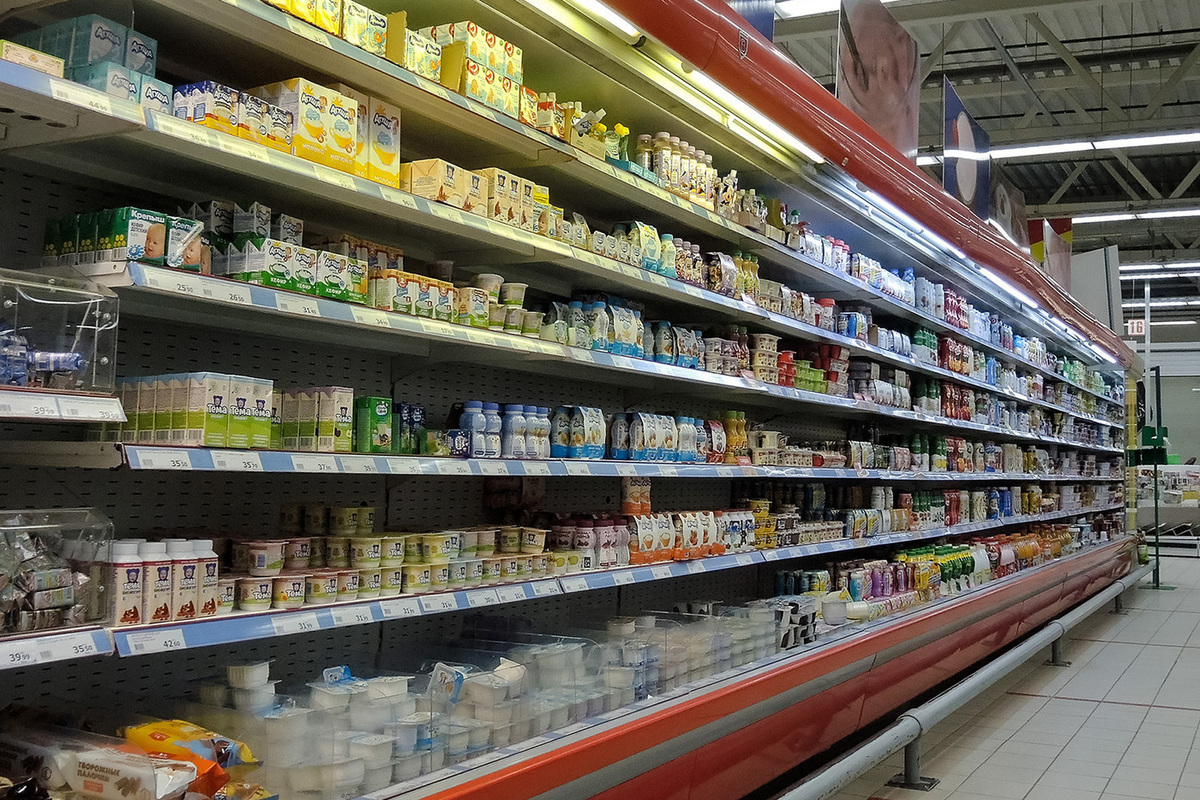The disadvantages of the idea of artificially promoting the “Russian shelf” in stores are named
[ad_1]

“Inspectors will walk around with a tape measure and count the centimeters of our and imported goods”
A “Russian shelf” may appear in online retail and brick-and-mortar stores. According to the new bill, goods of domestic origin will be physically brought to the fore, and imported products will literally be relegated to the margins of marketplaces. All this looks very patriotic – in the spirit of the times, but how it will work in practice is still unclear. There is no doubt about one thing: the bulk of consumers, when choosing a product, will continue to be guided by the criteria of price and quality, and not by belonging to their native country.
The document is being developed on the initiative of United Russia and with the support of the Ministry of Industry and Trade. According to the authors, the new rules will come into force on March 1, 2024. It is proposed to legally divide all goods on the market into domestic and foreign. The definition of the former will include those that are manufactured on the territory of the Russian Federation, and the owners of the enterprises must be Russians or Belarusians, and the brands must belong to citizens of the Russian Federation. As stated in the explanatory note to the bill, aggregators and online stores will have to “ensure, of course, priority placement of offers” for domestic products.
The quota will be determined over time by the Ministry of Industry and Trade, and it should not exceed 50% in traditional trade or 50 product cards in e-commerce. Compliance with the rules will be monitored by Rospotrebnadzor. The explanation also notes that Russia has its own strong production facilities and brands. In particular, household chemicals, cosmetics, perfumes, hygiene products, which are sometimes poorly represented in retail (foreign brands dominate the shelf). As a result, capacities are underutilized, and the consumer, in turn, is deprived of high-quality Russian products. The main message of the bill: as soon as these products receive enough space on the shelf and priority search results in online trading, manufacturers will be able to invest more in the development of their capacities. This means that the cost will begin to decrease and the quality of goods will begin to increase.
“Indeed, there are certain niches that are densely occupied by imports, and it is quite difficult to displace them from there,” says Andrei Karpov, president of the Russian Association of Retail Market Experts. – I view the bill, first of all, as a signal to investors. If they see that it is advisable to invest in the production of a particular domestic product, since it is guaranteed to end up on the shelf, the idea will justify itself. Today we have no problems with food products, which are 90% Russian and are presented in stores in the widest range. But in the non-food category (for example, in the segment of electronics, computers and household appliances) the situation is much worse: here at least 80% are imported goods. There’s clearly some work to be done here.”
But in any case, the state must take a reasonable market approach: quality, price parameters and the principle of healthy competition cannot be sacrificed to the idea; the consumer is not ready to overpay for products that he a priori does not need. In addition, Karpov argues, it is unlikely that stationary stores will allocate separate areas for purely Russian goods. Any product, regardless of manufacturer and country of origin, must be located in its usual place, in the category to which it belongs.
“People make purchases, choosing what suits them most, guided by the criteria of familiarity, quality, price, their financial capabilities and taste preferences,” notes Chairman of the Russian Consumer Union Pyotr Shelishch. – And I don’t think that the new measure will in any way affect trade turnover through offline stores. In addition, we have no problems with promoting domestic products in the food segment, where its share reaches 90-95%. Okay, let’s say you have marked out on a shelf five identical packages of one Russian product, and one each of five different imported ones. This does not mean at all that Russian goods will be bought five times more often. As for non-food categories, such as household appliances and electronics, they are almost entirely foreign-made. How do the new rules apply to them? If we talk about online trading, no one will again prohibit search results based on increasing (or decreasing) price or other criteria: the consumer always has a choice.
“Although, of course, additional hassles may turn some consumers away from using online stores,” summarizes Shelishch. – It’s not clear how to administer all this: what, Rospotrebnadzor inspectors will walk around retail outlets with a tape measure and see how many centimeters domestic canned food takes up on the counter, and how many imported? Cunning sellers will probably mix them up. In general, this manifestation of parliamentary patriotism is unlikely to find a response among people. It would be better if the state thought about how to produce more Russian goods themselves, and competitive ones at that. And then, I assure you, they will be guaranteed a place on the shelf anyway.”
[ad_2]
Source link






